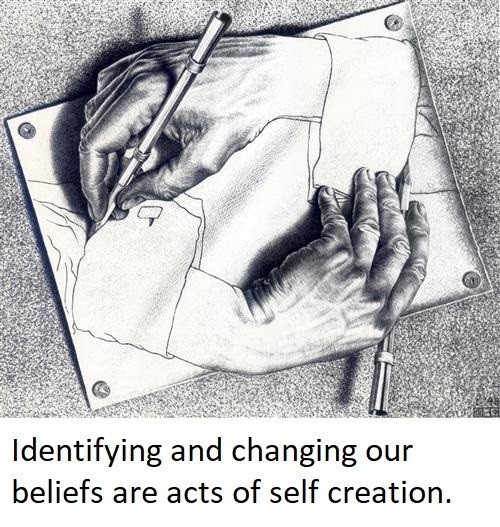Beliefs Part (V): Creating and Using Expansive Beliefs, Changing Beliefs Pdf
INTRODUCTION
We have been exploring and seeking to understand beliefs. We have seen how beliefs are part of the foundation of how we live our lives. Since they are so crucial to our everyday experience of life we want beliefs that help us experience the best that life has to offer. We want a belief system that helps us be whoever we want to be and to have and do whatever we want to have and do. We call beliefs that can take us to our next level of success and happiness expansive beliefs.
Here is a context for your search for expansive beliefs. Put into practice the second challenge for your growth discussed in The Operating Manual for the Self Chapter Three: A Challenge for Growth, Change, and Living Life: “Seek to feel good all the time.” Actually, we cannot and should not feel good all the time, but the seeking brings us more good feelings. (The other two challenges are: “Think about every thought,” and “Give and receive only love.” It is actually—think about every significant thought, using awareness, assessment, and questioning. There is a full explanation of the meaning of these ideas in the chapter.)
Point of Empowerment: We want beliefs that support the vision of awakening and furthering our human potential. (This is the vision of the International Institute for Self Development.)
In addition to understanding expansive beliefs, we will consider examples of how to change our beliefs.
WHAT EXPANSIVE BELIEFS DO
We are in pursuit of more happiness, joy, success, and fulfillment than we have at this moment. Therefore we are seeking beliefs that will support our quest. Here are some things that we want expansive beliefs to accomplish. We want beliefs that:
- Open our minds to new possibilities
- Help us generate new causes for the effects we want
- Help us see reality and ourselves in new ways
- Help us challenge our values and choose new values that support our growth and fulfillment
- Help us have new experiences so that our opinions about what is best are continually revised
- Help us to identify and change our limiting core beliefs
- Help us to expand our identity and image
- Take us beyond the upper level of our comfort zone, the upper limit of how much happiness and success we will allow into our life.
- Help us to develop and use our abilities, enabling us to accomplish more in life
- Help us enrich our life
- Enable us to make new possibilities part of our lives
- Provide us with powerful new core beliefs that give rise to powerful intermediate and powerful operative beliefs
Point of Empowerment: Changing your core beliefs is the most important, lasting, and far reaching change you can make.
FINDING EXPANSIVE BELIEFS
We can find expansive beliefs in:
- Self-help books and personal growth workshops
- Psychology books and magazines
- The metaphysical and spiritual literature
- Certain religious literature
- What is new in science, technology, and social science
- Science fiction (Some people say that what is science fiction today is the future of tomorrow.)
- Discovering what people who are happier and more successful than us believe
- Letting your imagination run wild: make a wish list, imagine what amazing things could be in your future, answer the question, “If I could have, do and be anything I want, what would that be?” And, “If I could live in the kind of world I want, what would that look like?”
EXAMPLES OF EXPANSIVE BELIEFS
Here are some examples of expansive beliefs. Some very expansive beliefs can sound simple but are quite complex.
- Since all things are possible, what is possible for me is greater than I believe it to be at this moment.
- I can be anyone I want to be. I can do and have anything that I can create for myself.
- I can feel good in my moment to moment experience of life.
- I can give and receive only love.
- I accept myself exactly as I am in this moment. And, I can change if I want to.
- I can increase my self-love.
- I love and accept myself exactly as I am in this moment.
- I can change and grow out of self-love, without pain.
- There is no limit to the self-esteem that I can have.
- I can increase my self-confidence to the point where I feel that I can cope with anything life brings my way.
- My potential for self-awareness, self-worth, self-love, self-confidence, and self-respect is unlimited.
- I understand that sometimes I will “see it when I believe it,” that there are times when belief precedes perception.
Practice: If you immediately reject any of these beliefs, discover and change the belief that keeps your belief system stuck in limitation.
CREATING EXPANSIVE BELIEFS, CHANGING BELIEFS—EXAMPLES
Let’s identify some expansive beliefs and trace the process of changing current beliefs to expansive beliefs. Remember we have core (fundamental), intermediate (in between), and operative (direct our daily behavior) beliefs. In working with expansive beliefs, which are often core beliefs, you might not be able to immediately change an old core belief to a new core belief. The “leap” is too great. You may have to change intermediate beliefs first. In these examples, we are working with core beliefs.
Expansive belief: I can improve the way I feel in general, the way I feel each minute of the day, the intensity of my good feeling, and the amount of good feeling in my life. Current belief: I have no control over my feelings, which reflect “the way life is” anyway.
- Understand that our feelings follow our thinking. So to change our feelings we change our thinking.
- Open to the possibility that you can change your thinking.
- Identify a time that you changed your thinking and felt better because of it. You now know that you can change the way you feel by changing your thinking.
- Identify a painful feeling and a feeling that could be an alternative. We could change frustration to hope for example. I feel frustrated by not having a girlfriend/boyfriend. To begin changing frustration to hope, write down what you have to offer in a relationship. Truly believe this by carefully reviewing it and by dealing with any objections that arise within you. State the affirmation: “Since I see that I have something of value to contribute to a relationship I can have hope that I will find someone who will value what I have to offer. This person will be interested in having a relationship with me.” Act on that hope by joining a dating website for example or take any action that will move you closer to meeting someone.
- Recognize and acknowledge, see and accept, your change of belief, the change of feeling (frustration to hope), your new actions, and the positive experiences all of this can bring you.
Expansive belief: There is no limit to the self-esteem that I can have. Current belief: I have some self-esteem and though it may increase a little, I am stuck with this level of self-esteem. The leap to believing in unlimited self-esteem is too great to accomplish all at once. The best approach is to begin with increasing one’s self-esteem. When we understand how to do this, we can repeat the process. When we see that we can rely on this process (increasing our self-esteem) and repeat it as often as we want, we can entertain the possibility that there is no limit to the self-esteem we can create. With experience we will move from considering a new possibility to having a new belief.
- Understand that self-esteem is the good feeling that you have about yourself. It is the positive regard that you have for yourself. And, most importantly, you create your self-esteem for yourself. This good feeling and positive regard is created when you see that something you have done matches the values, ethics, principles, and ideals that you hold and that you admire.
- Put this understanding into practice by identifying something that you are proud of doing. Fully acknowledge that you did it. Take responsibility for your behavior by owning the action. (The actions of acknowledging, owning, and taking responsibility in themselves raise our self-esteem.) Be willing to give yourself credit. Feel good about what you have done. Recognize the good feeling for and the positive regard you have, about yourself. Understand that you have created self-esteem for yourself. Allow your self-esteem to increase.
- If you don’t feel good, you are fighting the increase in self-esteem. You are resisting it. Identify and change the beliefs that give rise to the resistance. (see past letters on identifying beliefs and resolving resistance. https://iifsd.org/library/newsletters/)
- Repeating this process as often as you wish will show you that you can repeatedly increase your self-esteem and that there is no limit to the self-esteem you can have.
Consider this example. Yesterday you gave your friend a compliment for his/her accomplishment at work. Recognize that you are observant, that you see the good that others do, and that you care enough and have enough courage to give your friend a compliment. Experience yourself as observant, caring, and courageous, as having characteristics that you can admire. Know that you can use these qualities anytime you want. Allow your self-esteem to increase.
Expansive belief: I accept myself exactly as I am at this moment. Current beliefs: I am self-critical and must be this way. I need to be self-critical because this is the way I motivate myself to become a better person. (There are many reasons why we are self-critical and think that we need to be this way. Here we are examining one of them.)
- Identify intermediate alternative beliefs. These are: I can become a better person because it feels good. As I seek to become a better person I will realize that I deserve to feel good. Also, I change more easily if I accept myself.
- Open to a new possibility and a new choice: holding these new intermediate alternative beliefs, I choose to accept myself exactly as I am in this moment.
- Sense and resolve any resistance to holding the new belief. There could very well be resistance to this belief because opening to new possibilities and changing by simply making a choice are very expansive steps that can easily cause us fear.
CONCLUSION
In this letter we used creating expansive beliefs as examples to changing beliefs in general. Hopefully we have shown how beliefs are a fundamental element in creating the life that we live and in creating the life we want to live. Changing our beliefs can range from simple and easy to complex and very challenging. Yet as we engage this process we fulfill the vision—to awaken and further our human potential through self-development.

